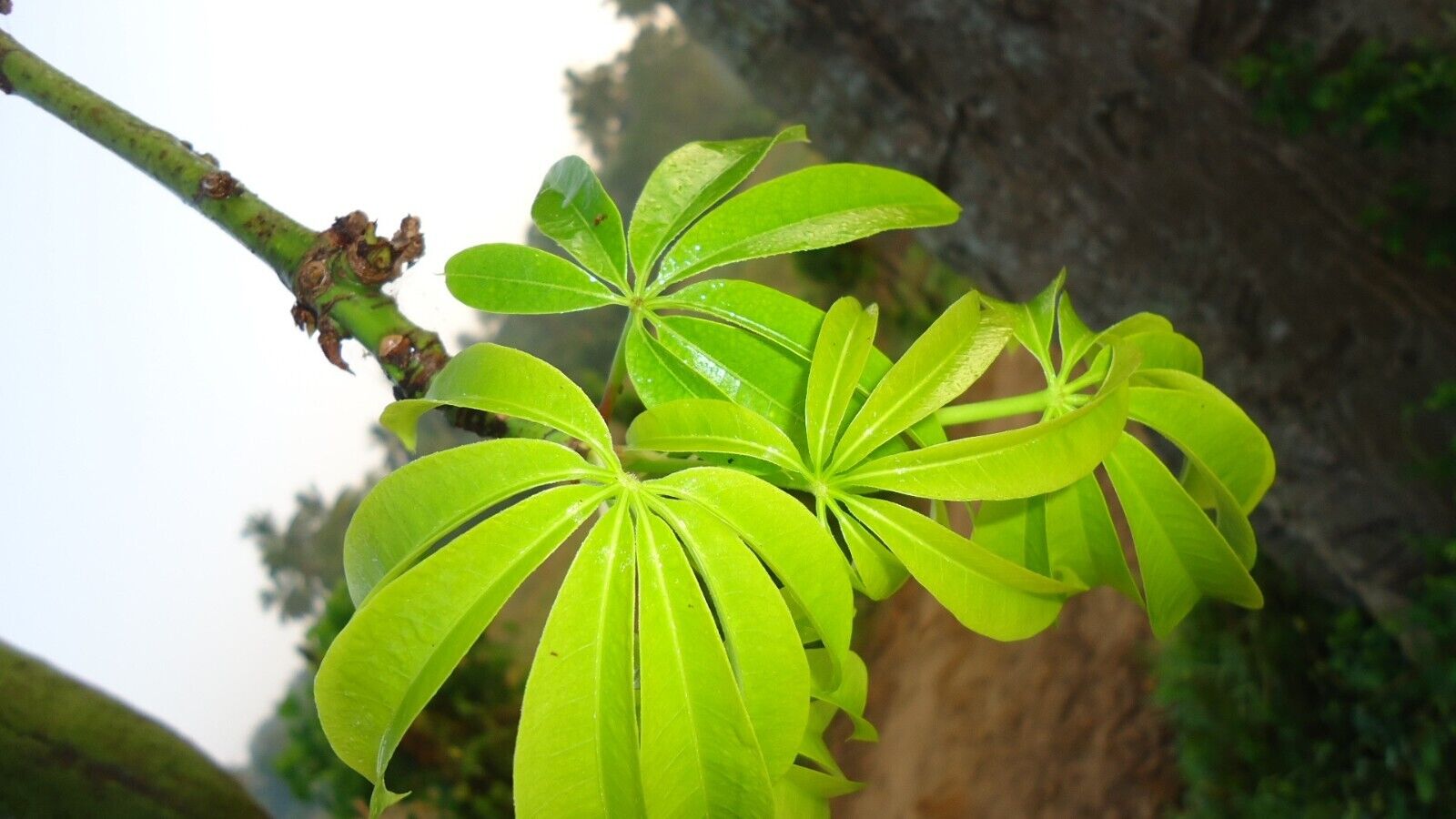Blog
The Kapok Tree: A Comprehensive Study of Ceiba pentandra


The Kapok tree, scientifically known as Ceiba pentandra, is a majestic tropical tree that thrives in the rainforests of Central and South America, as well as parts of Africa and Southeast Asia. Known for its towering height and distinctive fluffy seed pods, the Kapok tree has significant ecological, economic, and cultural importance. This article explores the botanical characteristics, medicinal uses, economic significance, conservation status, and the challenges faced by this remarkable species.
Botanical Characteristics
Ceiba pentandra is a large deciduous tree that can reach heights of up to 70 meters (230 feet), making it one of the tallest trees in tropical forests. Its unique features include:
- Leaves: The leaves are palmately compound, typically consisting of 5 to 9 leaflets that are dark green and glossy. They can measure up to 30 centimeters in length.
- Flowers: The flowers are large and showy, usually white or pink, with a characteristic five-petal structure. They bloom primarily at night and are pollinated mainly by bats and other nocturnal creatures.
- Fruits: The tree produces large, woody capsules that contain seeds enveloped in a fluffy, cotton-like fiber. These pods can hold up to 200 seeds each and can be dispersed by wind due to their lightweight structure.
Habitat and Distribution
Ceiba pentandra thrives in tropical climates and is commonly found in lowland rainforests. Its distribution includes:
- Native Regions: Central and South America (from southern Mexico to Brazil) and tropical Africa.
- Cultivated Areas: The tree is widely cultivated in Southeast Asia for its fiber and ornamental value.
The Kapok tree prefers well-drained soils and often grows near rivers or in areas with high humidity.
Medicinal Properties
The Kapok tree has been utilized in traditional medicine for centuries. Various parts of the plant—such as leaves, bark, flowers, and seeds—are employed for their therapeutic benefits:
- Anti-inflammatory Effects: Extracts from the bark have shown anti-inflammatory properties, making them useful for treating conditions like arthritis.
- Digestive Health: The leaves are used to alleviate gastrointestinal issues such as dysentery and diarrhea.
- Antioxidant Activity: The bark contains antioxidants that help combat oxidative stress in the body.
- Wound Healing: A decoction made from the leaves can be applied topically to promote healing of wounds.
- Respiratory Benefits: Infusions made from the flowers are traditionally used to treat coughs and respiratory issues.
- Nutritional Value: The seeds can be roasted and consumed or ground into meal for cooking.
- Cultural Significance: In many cultures, particularly among indigenous peoples, the Kapok tree holds spiritual significance and is often considered sacred.
Economic Uses
Beyond its medicinal applications, Ceiba pentandra has notable economic importance:
- Kapok Fiber: The fluffy fibers extracted from the seed pods are lightweight, water-resistant, and insulating. They are widely used as stuffing for pillows, mattresses, cushions, life jackets, and thermal insulation materials.
- Timber Production: The wood is soft but brittle when dry, making it suitable for crafting boxes, crates, paneling, and traditional dugout canoes.
- Oil Production: The seeds contain oil that can be used for cooking or making soap; the residue from oil extraction serves as nutritious animal feed.
- Ornamental Value: Due to its impressive size and beautiful flowers, the Kapok tree is often planted in parks and gardens as an ornamental tree.
Conservation Status
Despite its numerous benefits, Ceiba pentandra faces threats primarily from habitat loss due to deforestation:
- IUCN Status: While not currently listed as endangered by the IUCN, its populations are at risk due to habitat degradation caused by agriculture and urbanization.
- Legal Protection: Some regions have enacted laws to protect this species from illegal logging.
- Sustainable Practices: Encouraging sustainable harvesting methods can help maintain healthy populations while meeting economic demands.
Challenges Faced
- Deforestation: Rapid deforestation for agricultural development poses a significant threat to natural habitats where the Kapok tree grows.
- Urbanization: Expansion of urban areas leads to habitat fragmentation, further jeopardizing existing populations.
- Climate Change: Altered rainfall patterns and rising temperatures may impact the growth conditions for Ceiba pentandra.
- Lack of Awareness: There is often limited awareness regarding the ecological importance of this species among local communities.
Conservation Efforts

Efforts aimed at conserving Ceiba pentandra include:
- Reforestation Projects: Initiatives focused on restoring degraded habitats by planting native trees can help replenish populations.
- Community Engagement: Educating local communities about the ecological importance of the Kapok tree fosters conservation efforts.
- Research Initiatives: Continued scientific research into its medicinal properties can promote sustainable use while highlighting its value.
Conclusion
The Kapok tree (Ceiba pentandra) is an extraordinary plant with a rich history of medicinal use and economic significance. Its diverse applications—from traditional medicine to timber production—underscore its value in both cultural practices and modern industries. However, the challenges it faces necessitate urgent conservation efforts to protect this vital species for future generations.

Related
What are the unique medicinal properties of the kapok tree
How does the kapok tree contribute to environmental sustainability
What are the commercial uses of kapok fiber
How does the kapok tree support local wildlife
What are the traditional uses of kapok in different cultures
Discover more from Nath Mart
Subscribe to get the latest posts sent to your email.
